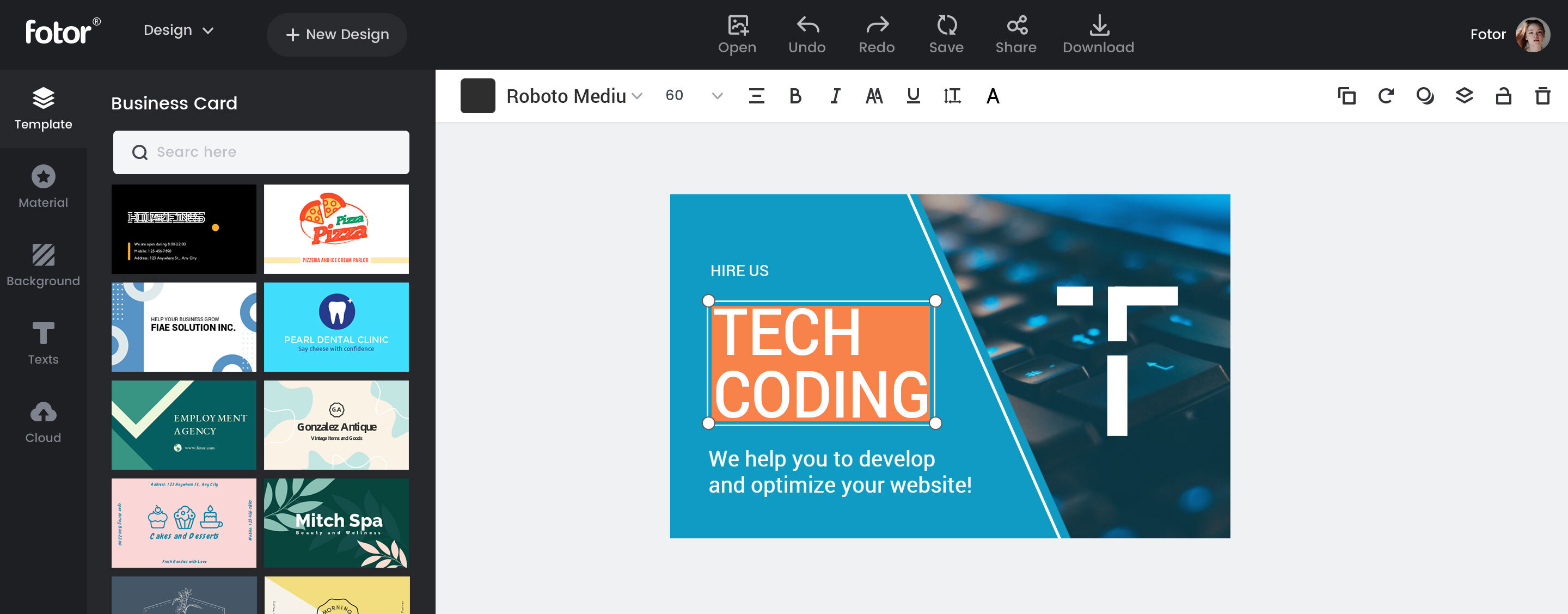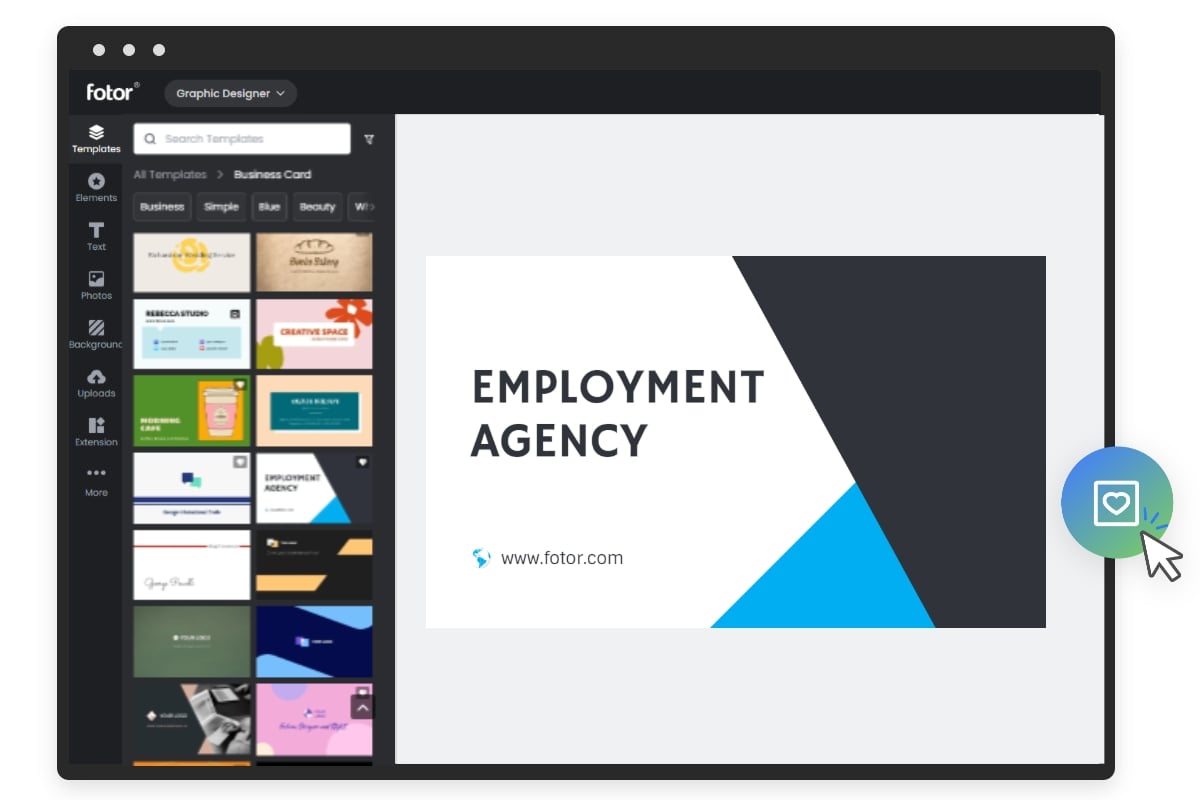Free Online Business Card Maker
Rely on Fotor’s business card creator to design a high-quality and stunning business card. Give your clients a slick way to remember you or your business!
*360+ well-designed, editable business card templates
*AI-Powered tools to add unique touch
*No previous design experience required
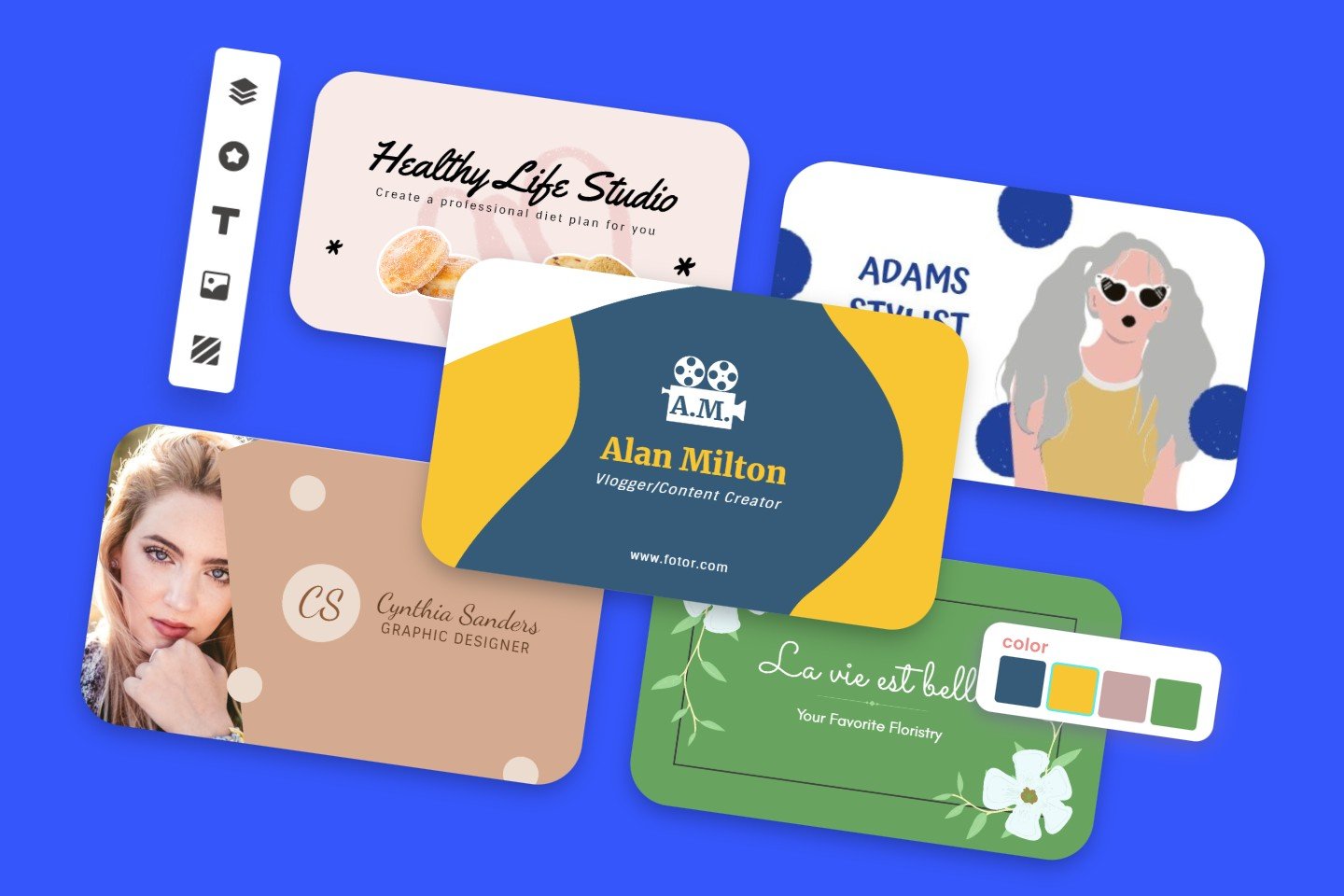
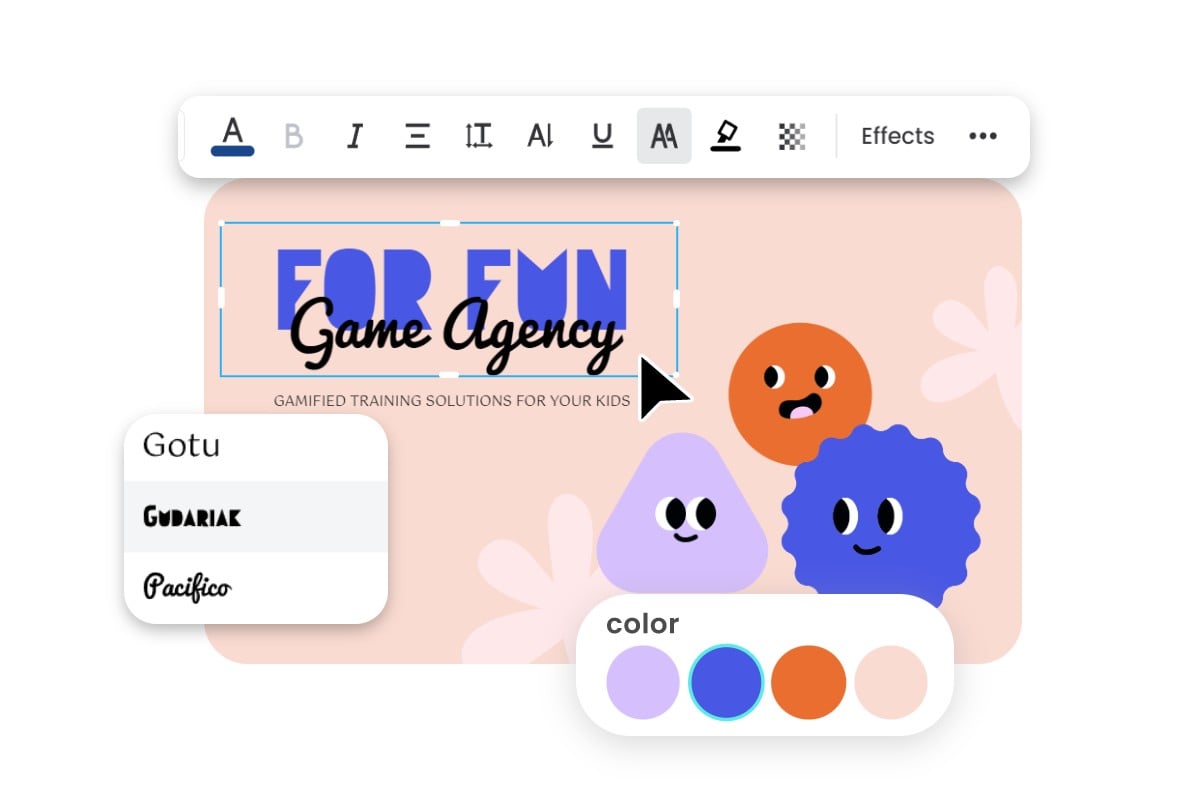
Customize Your Business Card As You Like
Experience hassle-free electronic business card customization with Fotor’s business card editor. Just pick the ideal template and personalize it to suit your own style or brand. For example, insert interesting stickers or shapes into the chosen sample, change the background color and edit the default text to your own while keeping the font and style. Additionally, Fotor provides whole-set business card templates, enabling you to design and export both sides of your card with minimal effort. With Fotor, the world is your oyster. Get inspired and build a business card that impresses your clients.
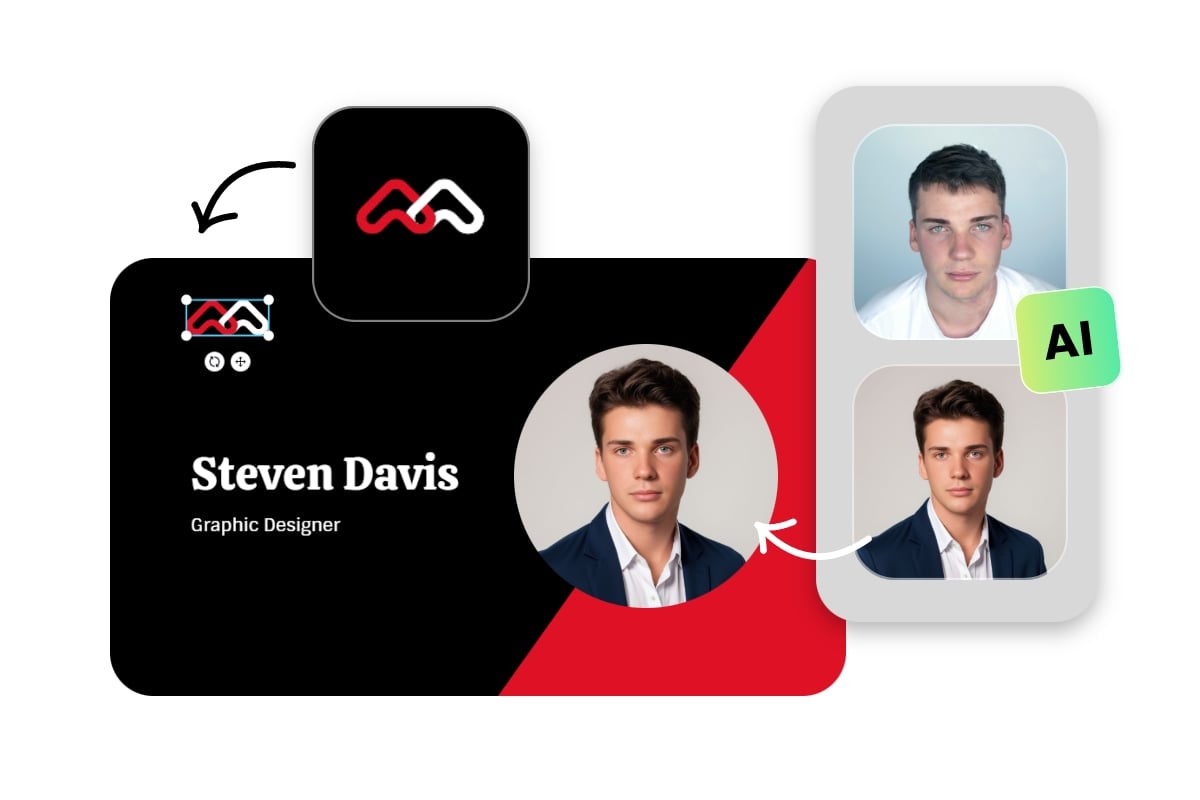
One-Platform Business Card Creation and Design
More than a business card builder, Fotor is also a valuable AI photo editor. When designing your digital card, you can further edit it without switching to another platform. Plenty of Fotor’s useful features at your disposal, such as:
Logo Maker: Create an exclusive logo to give your business card a fresh and impressive look.
AI Headshot Generator: Easily and quickly get a unique and professional headshot with AI for your business.
One-Tap Enhance: Use one click to improve the quality of your finished business card with the help of our avant-garde AI technology.
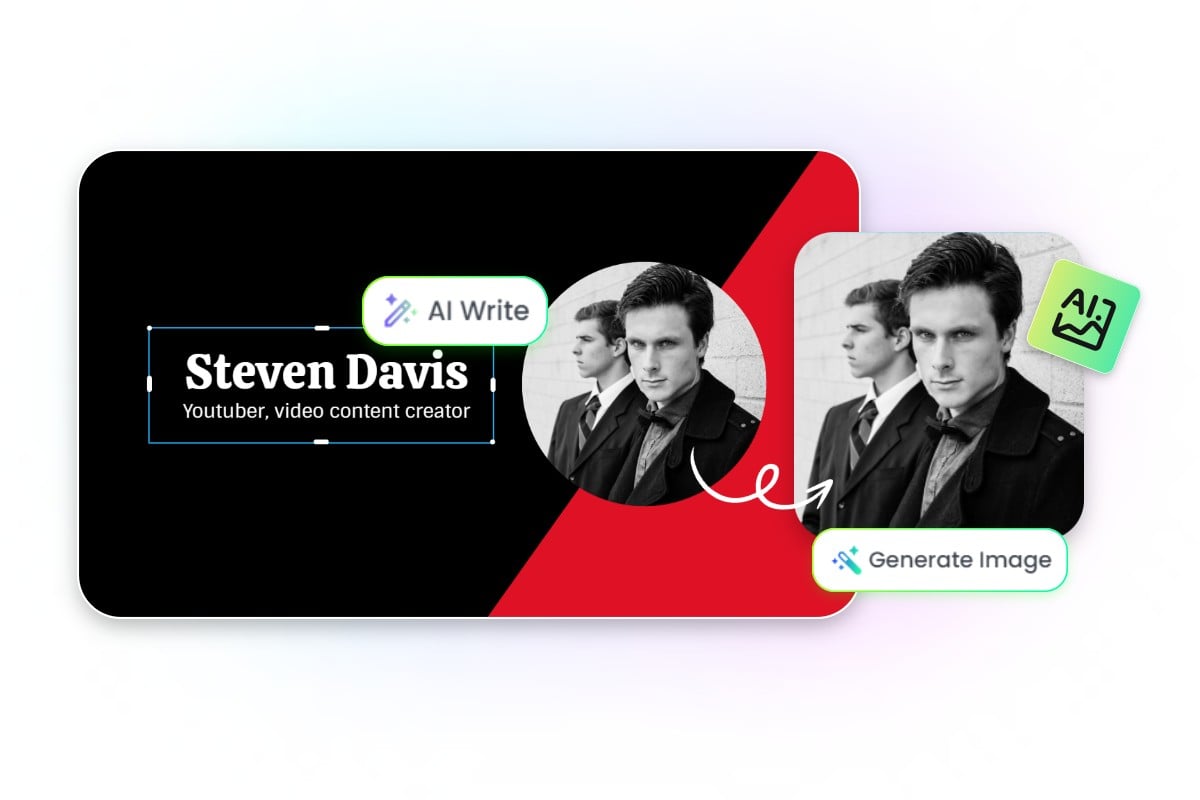
AI-Powered Business Card Generator
Equipped with powerful AI tools, Fotor can serve as a practical AI business card maker. Quickly access our AI image generator to create an exclusive visual from text or existing pictures for your business to leave a deep impression on your customers. Besides, try our latest AI write feature to assist you in generating catchy or memorable short copies for your niche or rewrite your existing ones to polish them. Just use Fotor to craft a unique virtual business card that makes you stand out.
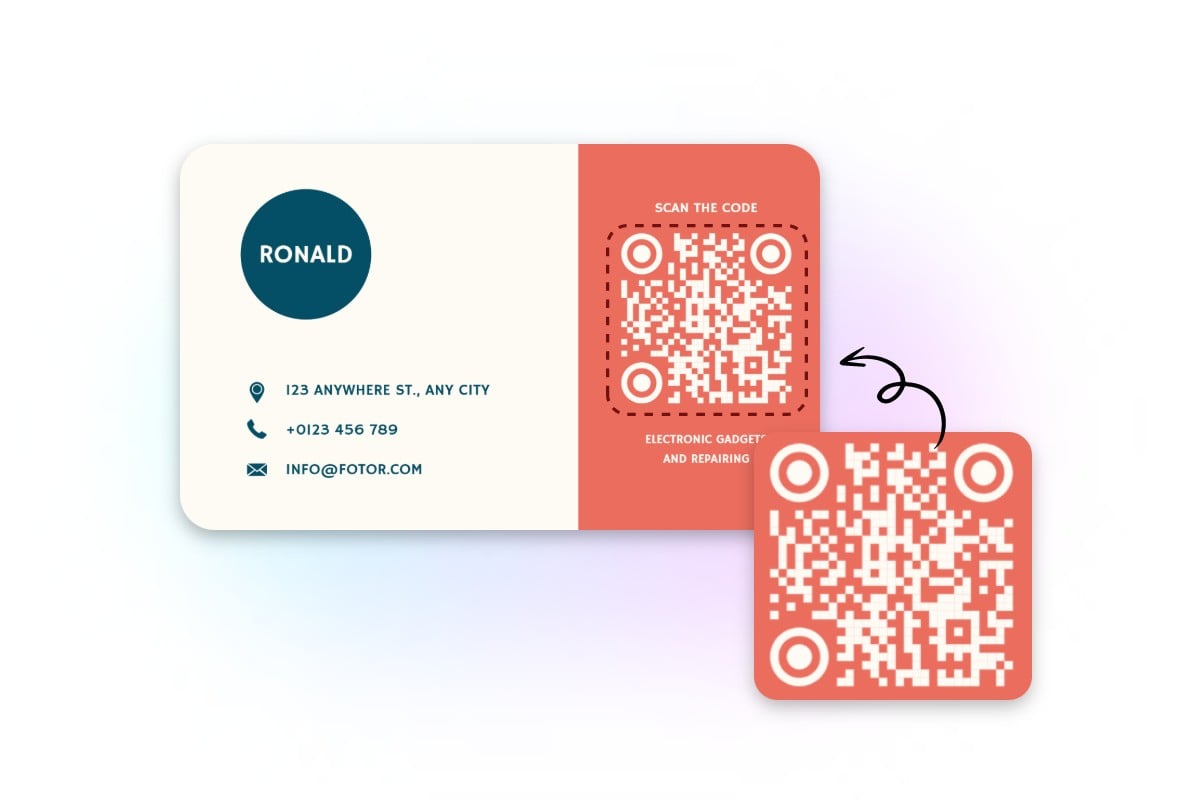
Make an Exquisite Business Card with QR Code
QR code is important in modern society since it helps to digitize the information from your physical name card, letting potential clients access your brand and understand your business digitally. Fotor offers a range of exquisitely designed templates of business cards with QR code. Simply add the code of your brand to replace the default one or utilize our QR code generator to quickly get a code for your business. Therefore, creating a business card with QR code can never been easier with Fotor.
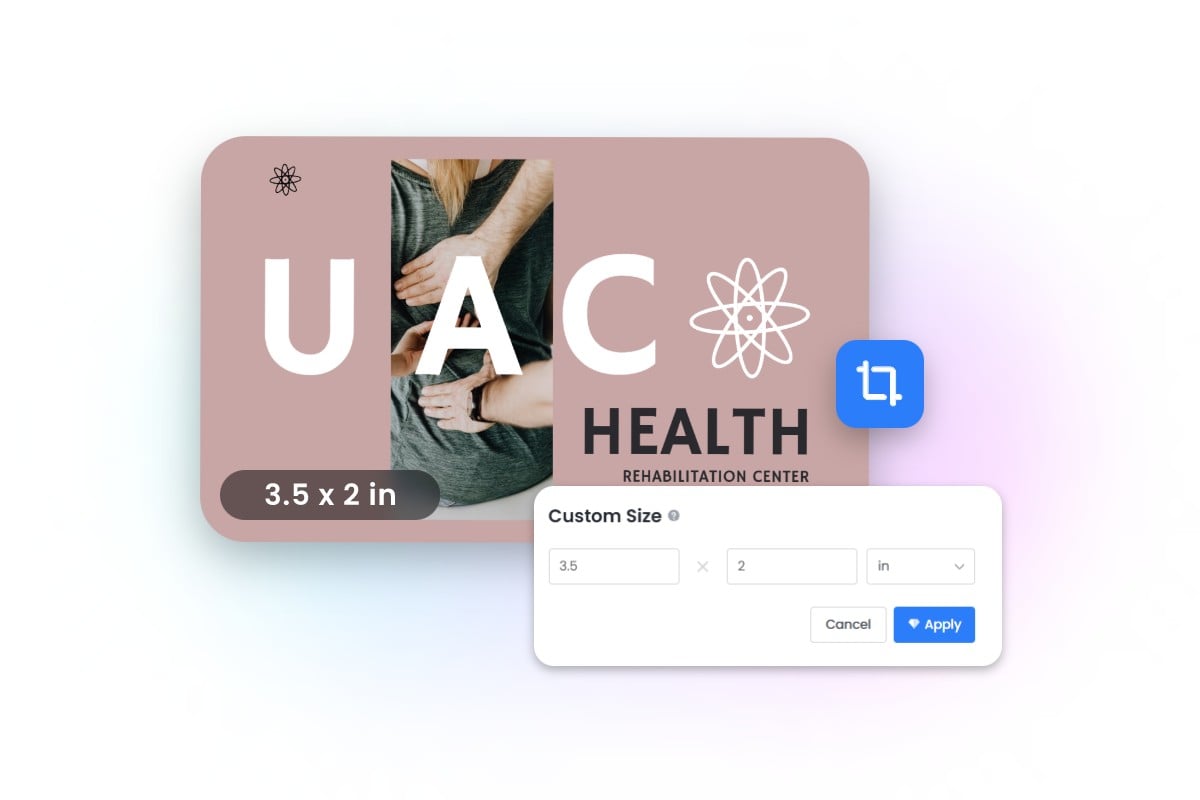
Get Professional Business Cards with Standard Dimensions
Typically, the standard size of a business card is 3.5 x 2 inches, which is about 8.9 x 5.1 cm. All our business card templates are designed based on the standard dimensions, which are perfect for sharing and printing. You save the trouble of cropping your design manually after your customization. If you have special requirements for your card, just click “Custom Size” to adjust the dimensions. With Fotor, business card size is the least thing to worry about.
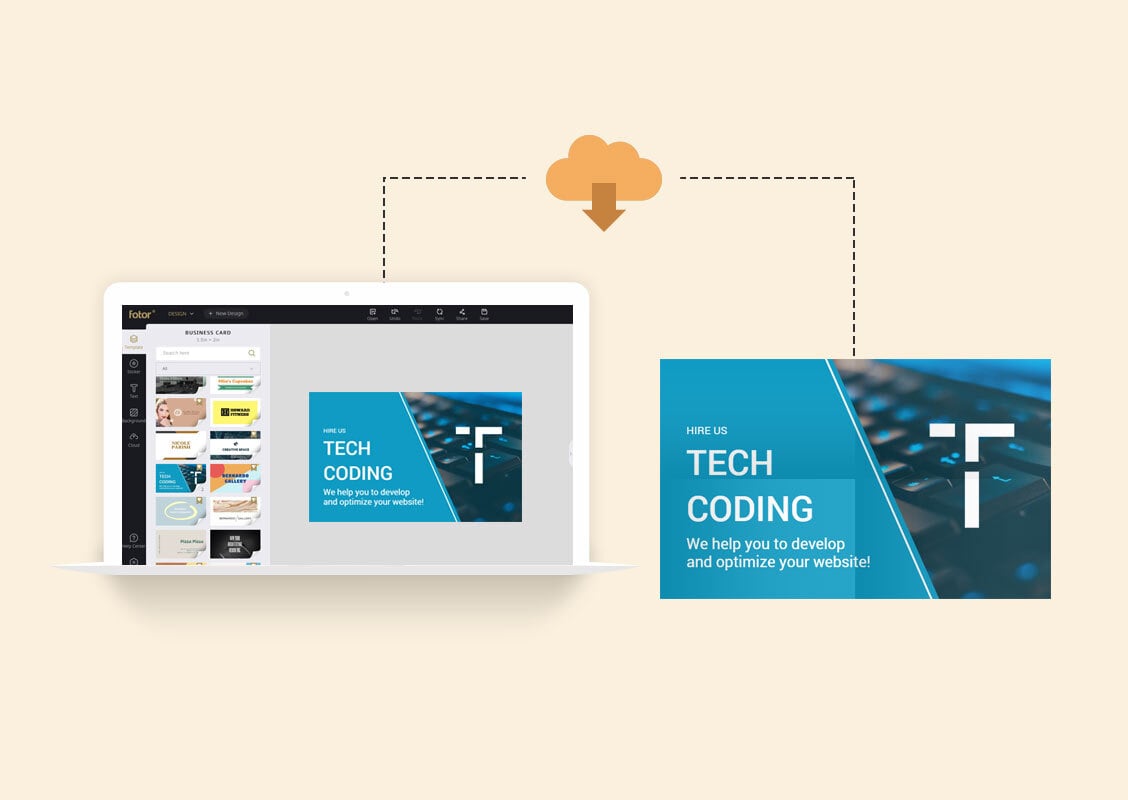
Save Your Business Card and Instantly Update it
The business world is constantly changing, so should your business card. Fortunately, with Fotor’s card maker, you can save and hold onto your designs, which allows you to jump right back into your old design and start editing to get a more modern look at any moment. There’s no need to start all over again from scratch. For instance, when your address or phone number has been changed, just return to your saved designs on your profile page, load it up and edit the relevant information to update your electronic business card.
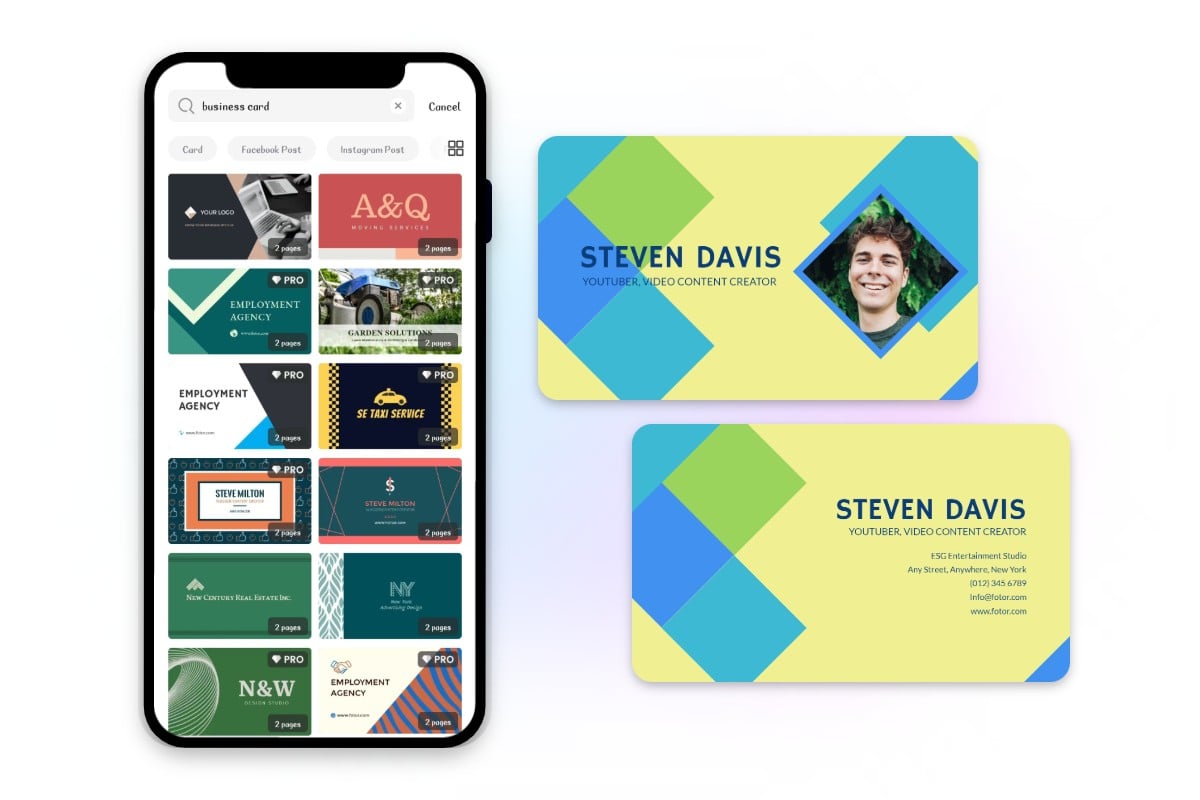
Business Maker App Available
Fotor doesn’t limit the fun of business card making on desktop. It amazes users with its cross-platform availability, supplying them with a mobile app compatible with both Android and iOS devices. Hence, you can experience straightforward business card design on the go, presenting your work anytime and anywhere. Instantly download and print it at the printing house near you or with your own printer.
Why Pick Fotor’s Business Card Maker?

Various Templates
360+ beautifully designed and category-based business card templates are available in Fotor. So, you can create a professional business card for any niche.

Easy to Use
Fotor’s business card builder boasts a user-friendly interface and simple operations. All visual elements are easily adjustable, so no design skills are needed to create an exquisite name card.
AI-Powered Features
Useful AI tools are inside Fotor to help you craft exclusive materials and even copies for your business card to make you outstanding.
Custom Options
Business card is definitely your call. Effortlessly get a stunning whole-set business card or an eye-catching one with a conspicuous QR code to align with your needs.
